So I have a nand gate using DTL (diode transistor Logic) but i don't know how to connect my DC motor to nand gate logic , I tried to put my DC motor to the output of DTL but it isn't working, may you recommend or advice something?

So I have a nand gate using DTL (diode transistor Logic) but i don't know how to connect my DC motor to nand gate logic , I tried to put my DC motor to the output of DTL but it isn't working, may you recommend or advice something?

See how to use an npn as a switch between battery and motor?.
How it works:
You don't need the resistor on the right if you connect the motor. It's resistance will do the same thing.
Firstly, there are a couple of ambiguities with how you have drawn your circuit. I will assume that you are connecting your motor between the Vcc(Power) and Output pins and that the output pin isn't actually connected to GND. The 1k resistor connected to the collector of the BJT isn't necessary but, it shouldn't be the problem.
The most likely reason that your motor doesn't seem to work correctly is probably because you aren't providing enough power to it (voltage and current). Therefore, after reading the specs of the motor to figure out its operating point. Check the following:
Ensure that the supply voltage is high enough to overcome the bandgaps of the didoe & base-emitter junction; in this case, at-least 1.4V (0.7V for diode and 0.7V for BE junction of BJT) would be needed at the node after the left 1k resistor (annotate your diagrams) to ensure that the BJT is in the active region.
After ensuring that the BJT can in fact operate in the active region, ensure that the voltage drop across the motor (voltage division between motor and VCE of BJT) will provide the voltage and current necessary for operating the motor as specified in its datasheet.